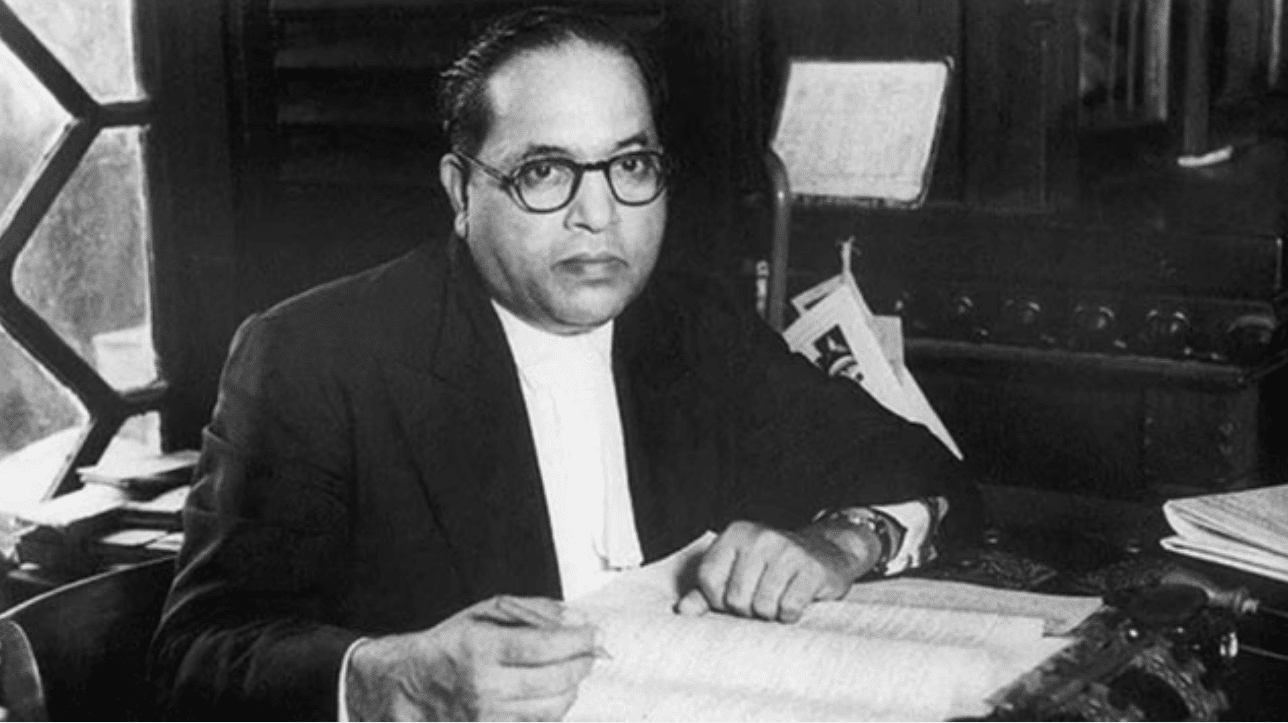
|
Getting your Trinity Audio player ready...
|
(The article was originally published in Indian Express on April 12, 2025 as a part of Dr Madhav’s column titled ‘Ram Rajya’. Views expressed are personal.)
History is a complex discipline with several layers. In his famous work, 1984, George Orwell prophetically said, “Who controls the past controls the future; who controls the present controls the past”. Contemporaneous interpretations often dominate our understanding of events and individuals in history. As we celebrate the 135th birth anniversary of Babasaheb Ambedkar, we must be wary of a superficial understanding of his life and works.
Ambedkar’s differences with Mahatma Gandhi are an important thesis topic in political and academic discourses. It is true that Ambedkar had fundamental disagreements with Gandhi and they continued even after the latter’s death. In an interview with the BBC in 1955, Ambedkar said that he wouldn’t like to call Gandhi a “Mahatma” because he “could see the inside of the man”. He accuses Gandhi of remaining a life-long supporter of the “orthodox varnashrama dharma” although he portrayed himself as an opponent of untouchability.
The status of “Untouchables” became the main bone of contention between Gandhi and Ambedkar. For Ambedkar, it was essentially a political question and he was dismissive about the social dimensions of the problem. “The Untouchables have become so conscious of the fact that temple-going is of no consequence at all,” he insisted, and believed that there were “other things which are far more important, namely, they should have the same status in the country and they should have the opportunity to hold high office”. Not only would this enhance their “dignity”, they would also get “strategic positions”, he argued.
Gandhi’s fast unto death after the Ramsay MacDonald government announced the Communal Award following the Second Round Table Conference in London forced Ambedkar to the negotiating table, and a compromise formula was worked out, known as the Poona Pact. Gandhi agreed to separate electorates at the primary level, while Ambedkar agreed to reserved seats for “untouchable” castes under joint electorates for the assemblies. This called for drawing up the schedule of those castes to be allowed to participate in the primaries. Ambedkar was against calling those castes “Harijan” as Gandhi insisted. Instead, since they were identified through a schedule, they were called the Scheduled Castes, a term that became integral to the Indian Constitution after Independence. Ambedkar was not fully satisfied, but he saw it as the first major political concession pending a major reform in the Hindu caste system.
Gandhi-Ambedkar differences stemmed from their different understanding of independence. Gandhi viewed swaraj as moral and ethical freedom at the level of each individual. In essence, while Ambedkar wanted political action to ameliorate the sufferings of the “Untouchables”, Gandhi advocated social and soul reform. Gandhi did hold a sympathetic view of the Hindu varnashrama system. But his views on caste evolved through his experience. In Harijan in 1936, a year before Ambedkar’s famous work Annihilation of Caste was published, he wrote, “caste has to go”.
Beyond these differences, however, there was a major confluence of ideas of the two great leaders. The most profound expression of it can be found in the writings and speeches of Ambedkar in his most eventful final year, 1956. Disregarding his declining health, Ambedkar went about completing his famous essay, ‘Buddha or Karl Marx’, an incisive critique of communism. Then came his address on the same topic, ‘Buddhism and Communism’, in Kathmandu in November. The culmination of his thoughts came in the form of his magnum opus, The Buddha and His Dhamma, which could only be published posthumously. He embraced Buddhism in October and breathed his last on December 6 that year.
On communism and violence, Ambedkar and Gandhi were on the same side. Gandhi criticised “Bolshevism” and warned against its “short-violent-cuts to success”. Ambedkar condemned communism because of its “devious path … to rush up and to take what we call short cuts”. The similarities in language cannot be missed.
For Gandhi, “means and ends” was an important part of the swaraj discourse. He rejected the notion that “the ends justify the means”. Ambedkar, too, became an ardent advocate of pure means in his final writings, invoking the difference between the doctrines of Buddha and Karl Marx. While both the great philosophers had the same ends in mind, their means differed, Ambedkar says. “Whose means are superior and lasting in the long run? Can the communists say that in achieving their valuable end, they have not destroyed other valuable ends?” he asks.
At the peak of their differences in the 1930s, Ambedkar was derisive about Gandhi’s moral politics of truth and ahimsa, calling them “hollow and noisy” and the “most dishonest politics in the history of Indian polity”. But, in the end, he too comes to acknowledge the importance of individual morality. “Expunge all bad thoughts. You are to expunge them by resolving that, though others may be harmful, you will be harmless. That, though others may kill, you will never kill … That, though others may be possessed by sloth and torpor, you will free yourself therefrom. That though others may be puffed up, you will be humble-minded,” he said, quoting Buddha. Sounds very Gandhian? After all, those were the ideals of swaraj or self-upliftment that all great leaders of our freedom movement, including Gandhi and Ambedkar, upheld zealously. The only difference could be that Gandhi, Aurobindo and Rabindranath Tagore drew inspiration for those ideals from Hinduism, while Ambedkar drew the same from Buddhism.




